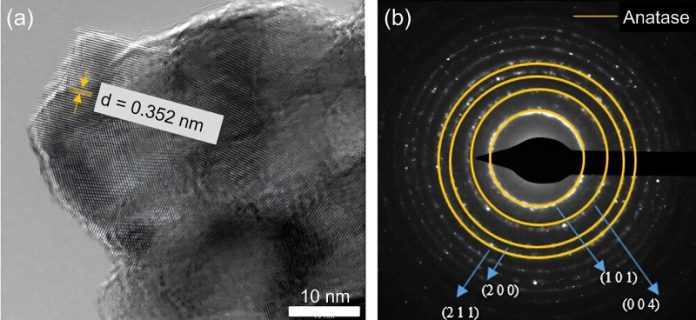
Imagine a thin, lightweight mat that floats on dirty water, soaks up sunlight, and cleans the water without any harmful side effects.
That’s exactly what researchers at The Ohio State University have developed — a new type of nanotech “blanket” that could help solve global water pollution problems.
The material is made from titanium dioxide (TiO₂), a compound commonly used in solar panels and self-cleaning windows.
Scientists used a method called electrospinning — where electric force pulls liquid into very fine fibers — to create soft, blanket-like mats.
These mats are called nanomats and have special powers when exposed to sunlight.
Normally, titanium dioxide can clean water and air by using sunlight to trigger chemical reactions, a process called photocatalysis.
But there’s a catch — it only works with UV light, which is just a small part of the sunlight we get on Earth. That limits its power and usefulness.
To fix that, researchers added copper to the material. This simple change made a huge difference. With copper, the nanomats can absorb more light and become much more powerful at breaking down harmful chemicals in water.
“When titanium dioxide absorbs light, it creates special particles that can destroy pollutants,” said lead researcher Pelagia-Iren Gouma. “Adding copper supercharges this effect.”
Tests showed that these nanomats worked better than regular solar cells under natural sunlight. They are not only powerful but also reusable, floating easily on water surfaces like a thin sheet.
They can be used over and over again, and they don’t produce any toxic leftovers — making them very eco-friendly.
These solar-powered nanomats could be life-changing in places where clean drinking water is hard to find. They may help remove industrial pollution from rivers and lakes in developing countries. Gouma believes their invention is the most efficient of its kind so far and hopes industries will start using it soon. “We have the tools to make them in large amounts,” she said. “Now we just need someone to help take them to the next level.”
The research was recently published in the journal Advanced Science. The team is now working on improving the mats even more and exploring other ways they can be used — like creating clean energy or helping fight air pollution.
“This material is truly one of a kind,” said Gouma. “It’s clean, safe, and incredibly effective — a real breakthrough in nanotechnology.”
Source: The Ohio State University.



